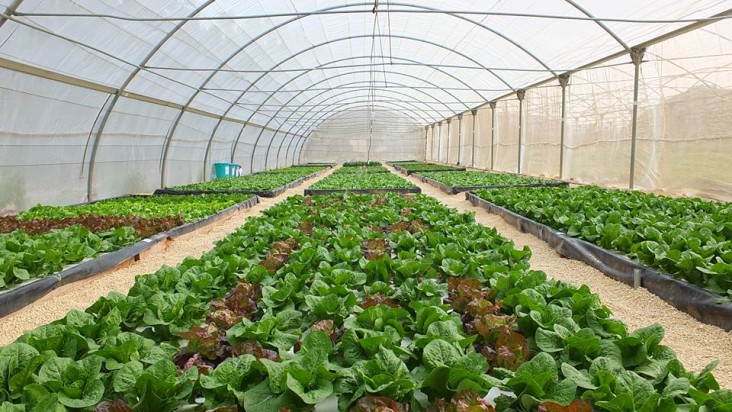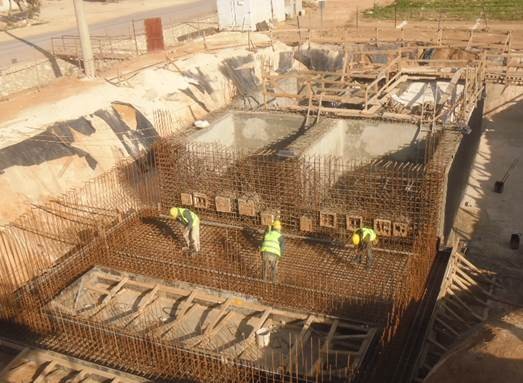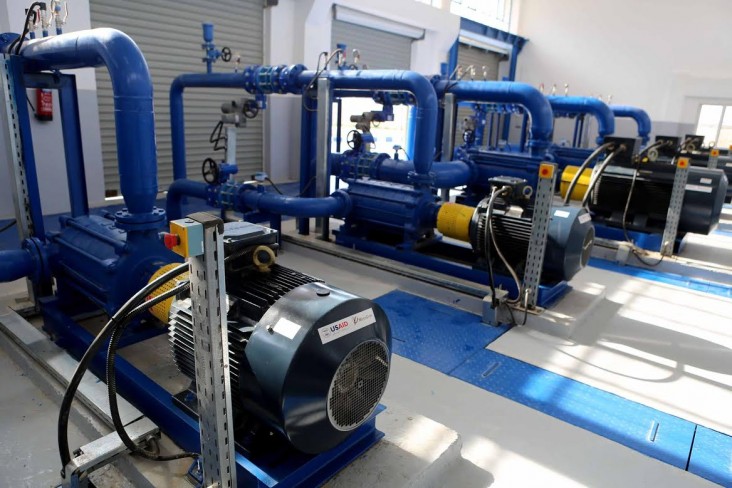OVERVIEW
Jordan has one of the lowest levels of water availability per capita in the world. With the Syrian crisis adding a dramatic population increase, and the population expected to double by 2047, meeting water demand has become even more critical. Climate change and changing precipitation patterns in the region will further aggravate the problem. Water scarcity impacts every aspect of Jordanian life.

The U.S. Government is partnering with the Government of Jordan and the private sector to address this challenge. During the 60 year partnership with Jordan, the U.S. has invested more in the water sector than any other sector. Since 2000, USAID’s support in the water sector has totaled to more than $700 million.
USAID/Jordan programs in the 1950s focused on infrastructure, expanding and rehabilitating water supply systems (wells, cisterns, springs, irrigation canals), and training hundreds of water experts. In later decades, USAID built and renovated several water networks and wastewater treatment plants, and supported a desalination plant near the Dead Sea to provide additional drinking water to over one million of Amman’s residents. Today, USAID’s assistance helps Jordan improve water infrastructure, reduce water losses, conserve Jordan’s precious water resources, and use them as efficiently as possible.
CHALLENGES

Jordan consumes more water than is available from renewable sources. Renewable water supply currently only meets about half of total water consumption. Shortages are caused by unsustainable groundwater extraction, including thousands of illegal private wells. As a result, many communities in Jordan have long experienced tensions over water scarcity even before the arrival of 657,433 registered Syrian refugees in the last five years. With this rapid influx in population, the gap between available water and demand, particularly in the north, has widened significantly.
In response to these water issues, Jordan is developing more immediate water sources and rehabilitating inefficient water networks. Still, more action is needed on the demand side to conserve and allocate water resources efficiently. Solutions must link awareness, incentives, behavior change, and conservation to more sustainable strategies for economic development.
CURRENT PROGRAMS
Improve Water and Wastewater Infrastructure:
(1) Improve water supply and wastewater treatment infrastructure. USAID is currently supporting large infrastructure projects including the Red-Sea Dead-Sea Project, Zara Ma’in Pumping and Treatment Station, Jerash and Tafileh Wastewater Treatment plants; (2) Introduce affordable technologies for utilities, communities, and households to reduce water losses; 3) Increase private sector participation in infrastructure investments.
Strengthen Water Management and Governance:
1) Reduce water losses, which has the potential to provide water for 2 million Jordanians; 2) Work with the Government of Jordan to strengthen water sector institutions and policies; 3) Encourage best commercial practices in water utilities.

Increase Water Conservation:
1) Promote behavioral change amongst the public and decision makers that support policy reform and increase water use efficiency; 2) Demonstrate and scale water conservation and reclaimed water programs in the agriculture sector, which consumes 50% of Jordan’s water; and 3) Cultivate community-based alliances for stewardship of shared regional water resources.
IMPACT & RECENT ACHIEVEMENTS
- Provided $700 million to the water sector since 2000.
- Increased the water supply and wastewater services for more than 2 million people in north Jordan through infrastructure improvements since 2000.
- Supported major water infrastructure improvements, including the construction of the Zara Ma’in water treatment plant and conveyance system, improvements to Amman’s water network, and community-based water projects in all 12 governorates,
- Increased the availability of fresh water and sanitation services through the construction of six major water/wastewater treatment facilities and networks during the past decade, including the As-Samra wastewater treatment plant Phase I, Mafraq Wastewater Treatment Plant, and the Jerash Wastewater Treatment Plant (under construction).
- Encouraged public acceptance of treated wastewater as a viable water resource for agricultural use.
- Promoted water sector reform through creation of autonomous water companies: Miyahuna, Aqaba Water in two major cities: Amman, and Aqaba; and Yarmouk Water Company in the North.
- Established water demand forecasting systems, enabling the water utilities to better plan for meeting future needs.
- Built the capacity of 177 Community Based Organizations to implement lending programs and/or community mobilization programs that improve water demand management.
JORDAN WATER FACTS
- Population growth has reduced the average amount of fresh water available to Jordanians to less than 150m3 per year (the average water availability for U.S. citizens is more than 9,000m3 per year).
- More than 90% of rainfall evaporates or runs off, representing lost potential for capture and aquifer recharge.
- Groundwater is being used at twice the rate at which it can be recharged.
- Agriculture consumes 50% of the water supply, but contributes only 3% of Jordan’s GDP.
- Unaccountable water losses (leakage, theft) on average accounts for 50% of total water supplied by municipal networks.
- Potential for reuse of treated wastewater in industry or agriculture could double by 2020.
Current Projects:
Upgrading the Mafraq Wastewater Treatment Plant
USAID Hydroponic Green Farming Initiative (HGFI)
Water and Wastewater Infrastructure Project
Closed Projects:
Water Reuse and Environmental Conservation Project (WRECP)
Community-Based Initiatives for Water Demand Management II (CBIWDM II)
Institutional Support and Strengthening Program (ISSP)








Comment
Make a general inquiry or suggest an improvement.